There are several factors which could attribute the succulents to droop. Here is what you want to know about succulent drooping and how to overcome this.
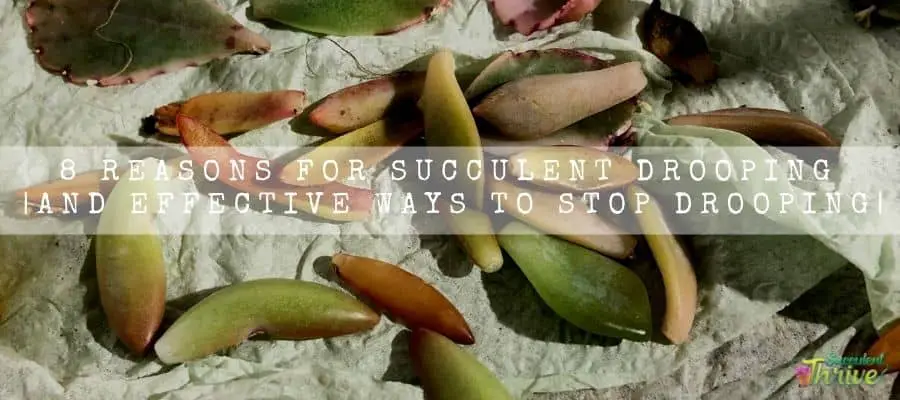
Succulent Drooping
As aforesaid, there are several reasons which could attribute the succulent’s droop. They are such as overwatering, freezing temperatures, under watering and rotting etc.
In addition to these reasons, factors such as pests and diseases and sudden drastic changes in temperatures could also cause succulent drooping.
In the general context, healthy succulents are usually seen as plump, firm plants. You cannot spot them stretched or bent and discolored.
Reasons for succulent Drooping
Over watering
In case if you over water your succulent, there is a high potential that your succulent could get droopy.
Moreover, it could also get squishy and start decaying too. Apart from that, leaves might become discolored and mushy as well. In addition to that, it will start shedding its leaves rapidly too.
One repercussion of over watering is the bottom part of your succulent turning black or brown. This is the point where you cannot save your plant no matter what you do.
Underwatering
Underwatering is another key factor which could cause the succulents to droop. In case you do not provide sufficient water for the succulent, they tend to shrivel their leaves in response to that.
Over time, their leaves would get less plump. There is a high potential for the slender leaves to turn crispy and the plant will start to shed its leaves faster.
Fertilizer
Too much fertilizing is yet another reason for the succulents to become droopy.
Feeding the succulents is a useful factor which could help the plants to grow faster, and which could boost the blooming of them.
However, you should avoid over feeding them. During their growth season once a month fertilizing would be sufficient for them to thrive well.
However, make sure that you apply the fertilizers as per the recommended doses.
In case if you supply too many fertilizers for the plant, it could show you a much faster growth.
However, when they do that, there is a high probability of forming soft tissues which are more prone to diseases and somewhat weaker than the regular tissues.
As such, over feeding could also affect the succulents for drooping.
When you select a fertilizer ensure that you select a fertilizer which has a lower percentage of nitrogen, and which has an even amount of potassium and phosphorus.
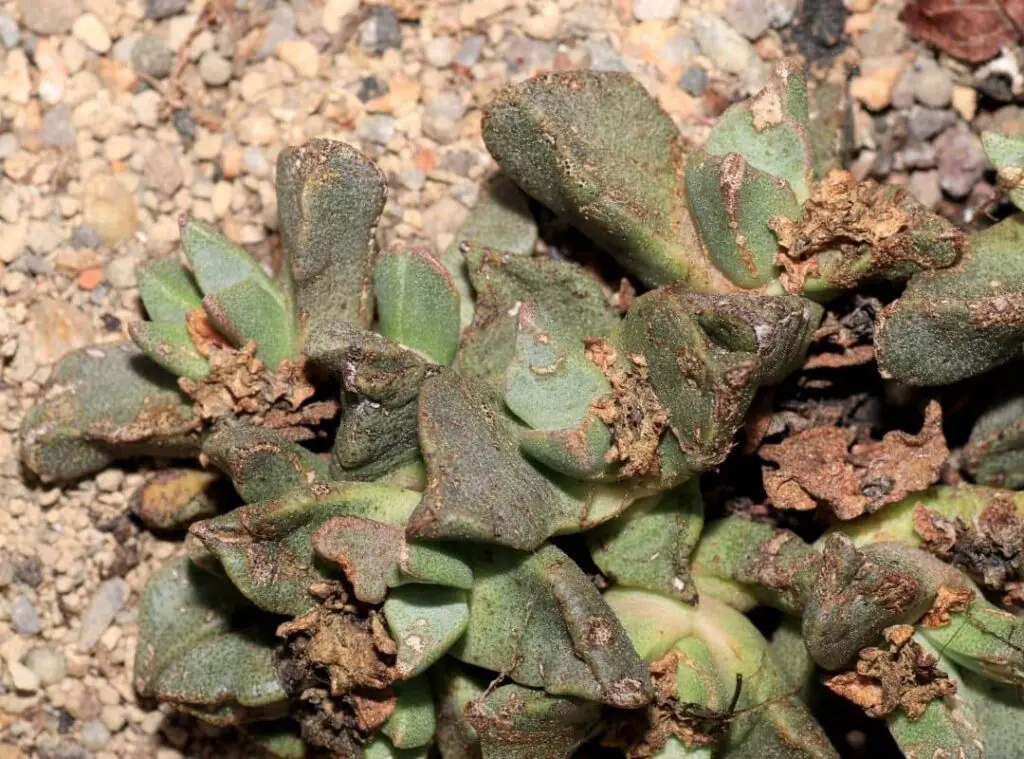
Temperature
Freezing/cold weather
Freezing also affects the succulents to become droopy. For example, a succulent like Panda plant is quite responsive towards colder conditions.
As such you need to make sure that you protect the plant from colder weather conditions.
If you come across any situation where the succulent freezes entirely, you cannot get it back to normalcy despite what you do to save it.
Hence why I keep stating that it is crucial to bring it indoors when you see any colder weather conditions.
Succulents could thrive in various minimum temperatures depending on its species. In the general context they could survive at approximately about 40 degrees Fahrenheit (4 Celsius) and that is the lowest temperature they could survive without any trouble.
Even when you shift your succulents indoors, you need to still make sure that you keep them indoors at a sunny windowsill.
It will help the plant to have a smooth transition in spring and in summer. Bear in mind you should not locate these plants closer to radiators and stuff.
You could water them once a month which will help to avoid the roots decaying.
On the other hand, you may leave your succulents outdoors right throughout the winter in case you get only a couple of hours of light frost which is below temperature.
Apart from that, you may use a horticultural cloth which could help you to protect the plants from heavy rainfall.
It is quite common that many people, particularly the freshers in gardening, tend to leave their succulents in darker areas during winter and they expose the plants to sunny conditions at once which will traumatize the plants.
As a result of this, they tend to get sun burns when they get exposed to intense heat conditions.
In case you own a succulent, which is more resistant towards colder weather conditions and if the forecasted temperature is also not getting too low without any second thoughts you may leave it outdoors.
On the other hand, you need to cut down on watering and rather do it less than you do in regular seasons.
You may not water them at all if it is too cold if you keep them outdoors. The reason for this is, if you provide it with less water, it will have a less tendency to freeze and chances are that it will not freeze at all.
When a succulent freezes, it will become droopy including their stem and leaves. Over time, chances are that they could develop brown spots on the succulent leaves.
When it gets critical, there is a high probability of occurring root rots too.
When you have grown succulents indoors, avoid shutting them behind curtains particularly at night when it is cold.
If the succulent gets exposed to cold drought, it would make a serious impact on the plants well being and on the health.
Hot and high temperature levels
Succulents in general are used to grow in high temperature areas and in dry weather conditions.
Having said that, they could still suffer from sunburns, If they go through extreme heated temperatures for prolonged periods.
One of the common mistakes that people tend to make are exposing the succulents at once for lots of sunlight soon after having placed them in low light conditions during winter.
It will have the same results once you buy a new plant, which has grown under different growing conditions and expose them to direct sunlight.
You need to gradually expose the plants to full sunlight if you have kept them in low light for too long in the winter.
You may use a shade cloth to place in front of the plant which will safeguard them from bright sunlight. You could take off the cloth slowly within one week’s time.
On the other hand, if you let the plant grow in too much heat, it could cause the soil to dry faster which will enhance the under-watering condition.
Do not place the plants closer to hot radiators during winter. Usually, if you expose the plants to temperatures around 30 Celsius, it would be unhealthy for the plants and they will result in scorching, corking and sunburns as well.
As such, if you expose the plants for sudden drastic changes in the temperatures that will also help the plant to become droopy.
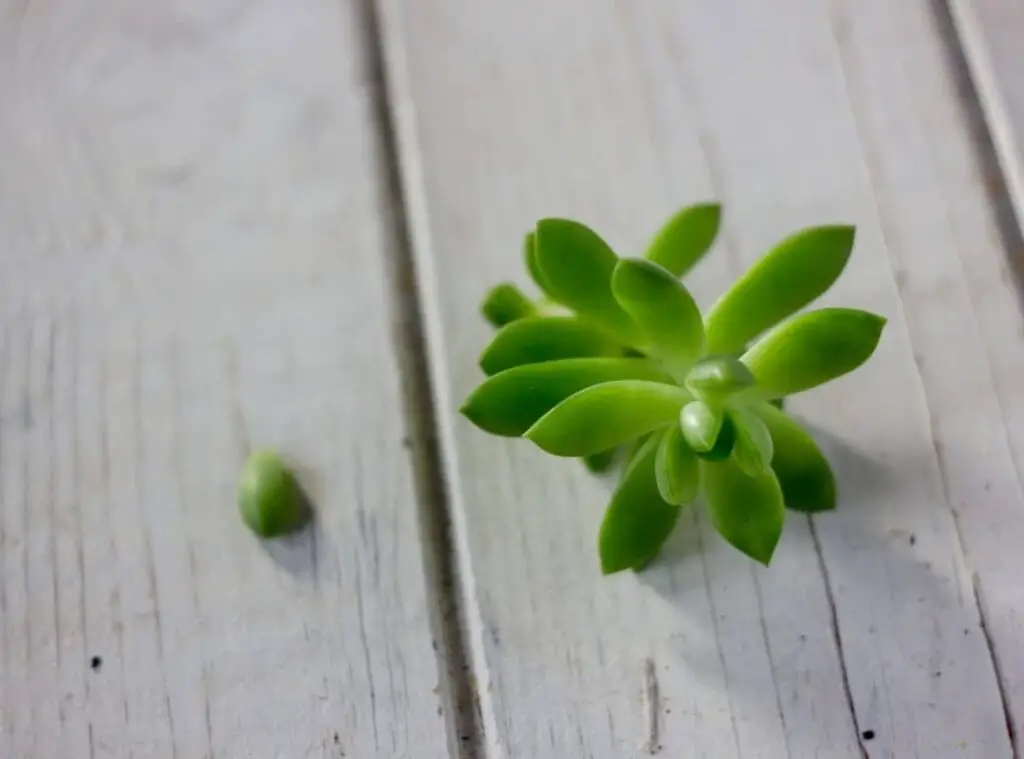
Low light or bright light
If you let the succulents run short of adequate sunlight, that could attribute the plants to drooping more than excess sunlight.
Literally, if the succulents are getting excess sunlight, it could affect for repercussions such as scorching, burns and corking etc.
on the other hand, if the succulents do not get adequate sunlight, they would suffer from etiolation and tend to become slender whilst reaching for sunlight.
Succulents would generally thrive better in a lot of sunlight which should ideally be indirect. When they run short of adequate sunlight, they try to grab more light.
Whilst this happens, their leaves would start to get slender and consequently the plant will become droopy.
In the general context, we need to provide 6 hours of indirect sunlight daily when they are in their growing season.
You could place them in a shady place particularly during the afternoon hours.
In terms of light requirements of the indoor grown succulents, you need to make sure that you place the plants closer to the windowsill where they can get enough sunlight.
Moreover, if it is still not possible for you to provide natural sunlight, you may consider growing them under artificial lights or supplement them with a grow light.
Diseases
Succulents tend to droop due to pests’ attacks and due to some diseases as well. You could spot the droopy leaves as well as droopy stems due to this issue.
The mistakes you do when you care for this along with improper growing conditions could attract pests and cause various diseases.
It is vital that you identify the pests and diseases in advance and attend to it immediately and remedy it. Unless it could make lethal repercussions on the plant.
Mealy bugs, fungus, gnats, vine weevil’s spider mites and scales are some of the common annoying bugs which you would come across when growing succulents.
If you spot any white cottony organisms on the succulents and as well as on the roots, those could most probably be mealybugs.
You could identify a spider mite attack if you spot any tiny red bugs who are usually crawling on the plant. On the other hand, vine weevil could be spotted in black bugs
It is crucial that you keep the plant under observation at least once a week.
Apart from that, you may take the plant out from the pot and examine the plant’s roots and check whether they have been invaded by any fungus, pots, mold etc.
Furthermore, if you could spot some tiny green, yellow creatures, they could be aphids. Further chances are that they could appear as dark bugs as well.
They usually depend on the succulent juices as their main source of food and absorb all the essential nutrients from it.
Moreover, Aphids eggs could survive in both cold and warmer conditions. As such they could be more dangerous since they can harm the succulents in different weather conditions.
As such all these bug attacks could cause the succulents to droop.
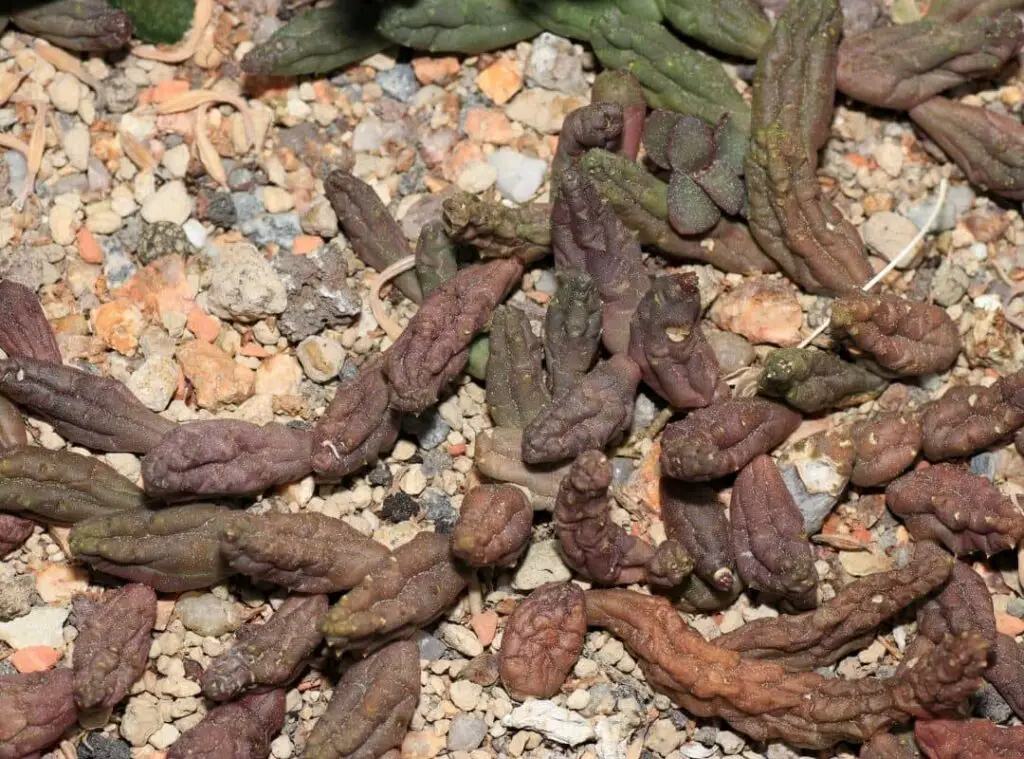
Substrate
Substrates could also affect the succulents to become drooping. Soggy and damp conditions in the soil could cause droopiness.
Best is to report the succulents once you spot them going through this condition. Moreover, you could clean the wet soil around the plant’s roots and you can trim the rotten roots too.
Pet factor
Your furry friends at home could also cause the succulents to become droopy. Once you leave your succulents approachable for your pets, they tend to harm the plants.
It could be even more risky if the plants are toxic towards the pets.
On the other hand, chances are that they would cause damage to the plant, and it will impact the plant’s growth.
As such it is important that you protect the plants from pets as it could also affect the succulents to become droopy.
How to treat succulent Drooping
Proper watering
It is important that you water the succulents while adhering to a watering schedule whilst making sure that you do not over water them or not under water them.
Moreover, if you are unsure whether you need to water the succulents or not you may use a moisture meter and check the moisture in the soil.
In addition to that, always make sure that you check the soil condition whether it is too dry or too wet to water them.
If the soil condition is too soggy and damp, you should wait for another couple of days before you water them.
Moreover, despite all these, if you cannot recover the draping succulents, you may consider repotting them.
Continuous monitoring
Keep the plants under your observation to see whether there are any bug attacks and remedy them immediately.
To do this, you may use a few sprays of insecticidal soap or even some recommended repellent to wipe them off.
If you have bug attacks found in outdoor succulents, you could use the sprays or even introduce ladybugs specially to overcome the aphids.
If the plant is going through any scale attack, you could simply pick them off from the plant.
It would be very productive if you use any soap spray as the scales usually come with shells and they act as a defensive part to protect the scales from those.
On the other hand, you could utilize a natural substance such as neem oil or even rubbing alcohol to treat them.
You only have to apply them directly on the damaged areas while using a cotton swab. To treat mealybugs, you only have to spray insecticides soap.
However, you need to apply the insecticides more frequently than you do to treat the other pests as mealybugs are tougher. Best is to do it ideally twice or thrice per day.
When you try the aforesaid treatments, you could recover your succulents. However, make sure that you provide it with a lot of sunlight and consistent watering as appropriate.
Given all these care treatments, they could rise back as the healthy plant as they used to be.
Moreover, you could prevent any insects landing on your succulents by keeping a sticky strip around your houseplant.
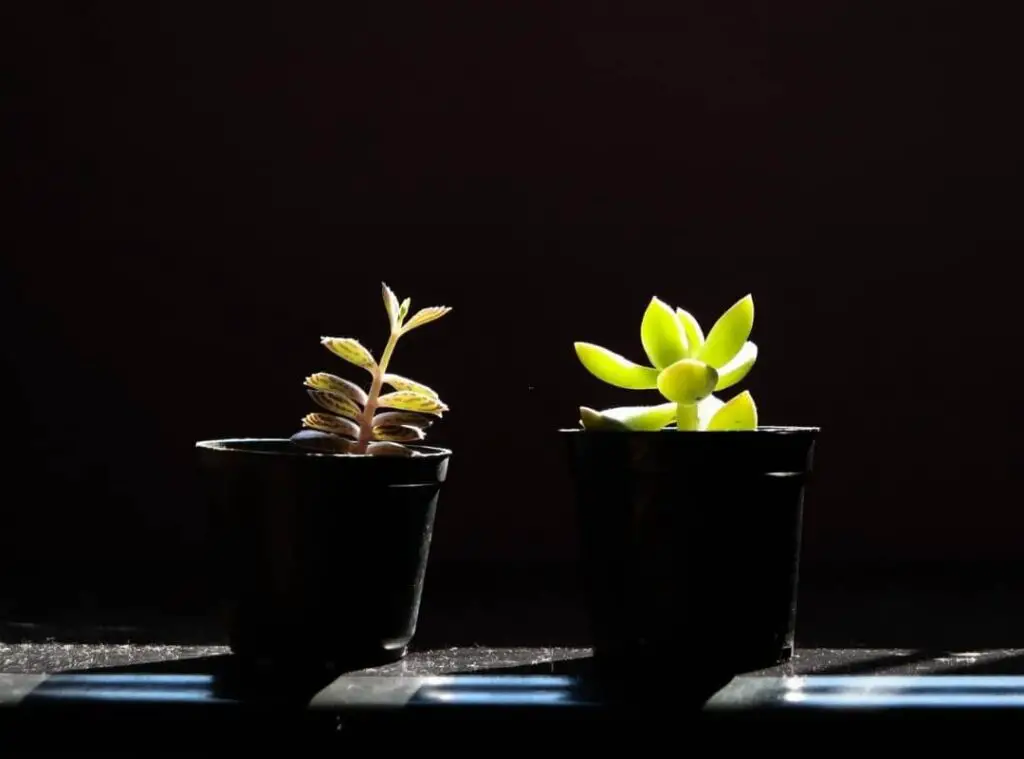
Check for damage
In case you spot your succulent stem is bent and stretched, chances are that they would be cracked inside and that will contribute to an improper water circulation in the plant.
Since a stem problem would have caused this drooping condition of the plant, you may straighten it up or even try to bind the damage spot whilst using cheesecloth.
After that, you continue watering them lightly and it will heal. If not, you could trim off the broken stem so that the rest of the plant can continue its growth.
Provide some shade for the succulents.
Consider that you water the succulents on a consistent basis, still chances are that your succulent gets droopy due to where they are placed.
If you have literally grown them in a place where it gets too much sunlight and too much heat, it could make trouble for the plant.
When they expose extensive heat for a prolonged period, they tend to use their water excessively and that will contribute to succulents drooping.
Prevention is better than cure (prevention methods)
First you need to select a succulent type which could thrive in the location you live in.
If you select a succulent which could thrive in environmental conditions you live in, it will be harder for the plant to survive and tend to be in stress.
In addition to the above, make sure that you provide adequate sunlight conditions and water them consistently and moderately.
Bear in mind that you provide its essential nutrient requirements too. Most importantly, you could keep the succulents under your observation at least once a week.
That will allow you to identify if there are any symptoms of diseases or whether the plant is in stress.
Watering schedule
Best is to stick to a watering schedule so that you do not have to worry whether you need to water the plant or not.
Moreover, you may use a moisture meter also so that you could check on the moisture level of the soil prior to watering.
On the other hand, keep in mind that smaller container soil and the gritty soil outdoors tend to wither rapidly compared to when you grow succulents in loam soil.
As such it is important that you let your succulent grow in an appropriate soil type so that excess water could drain rapidly while the plant could absorb enough water.
Moreover, you need to adjust watering depending on the climate conditions you live in too.
Generally, what you could do before you water the succulents is to check the top surface of the soil.
You could simply place your finger in the soil a few inches deeper and decide whether it is dry or still soggy.
If the soil is dry, you could start watering the plants. On the other hand, if it is too soggy you need to wait for another couple of days and then water.
If you are someone who lives in hot and dry weather conditions, you could water the succulents generally once every 10 days during summer.
You could minimize watering to once a month when it is the winter and fall. Moreover, when you water the succulents, ensure that you do it thoroughly.
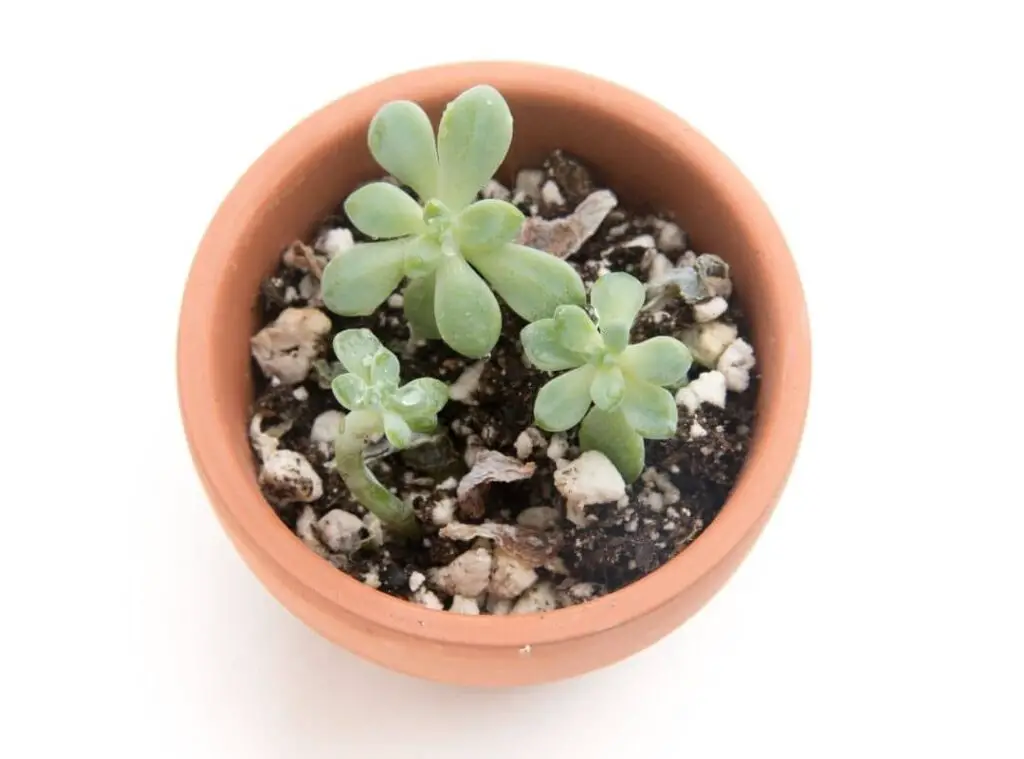
Best place for succulent
You need to place your succulent indoors whilst making sure that it gets adequate sunlight.
It is important that you provide adequate sunlight for the plants growing indoors as they usually run short of sunlight.
Best is to locate them closer to a bright sunny window. Moreover, you could consider growing them under artificial lights too.
You need to adjust watering depending on those conditions.
If you are growing the succulents outdoors, you need to make sure that you shift it indoors when there is any forecast of freezing temperatures.
Succulents in general are not cold hardy plants and if we expose them for colder temperatures those will badly affect the plants.
Related question
How do you revive a droopy succulent?
What is best to practice when you have to rescue a droopy succulent is to take the succulent out of the soil and clean the roots from the soil. Further you could trim off the rotten roots.
leave the plant on a strainer or even on a mesh to let it dry. Once you notice that the plant is dry, you could plant them in the pot once again.
What do Overwatered succulents look like?
It will not appear to be in a healthy look when it is suffering from over watering.
Over watering could occur as a result of providing a less draining soil mix, not providing a pot which has enough draining holes or supplying it with excess water.
Usually, an overwatered succulent could be spotted with mushy leaves. Furthermore, when you try to touch them, you will feel like they are soft to the touch.
They would change their colors to a lighter color or even tend to turn translucent too. Moreover they would tend to shed their leaves even if you touch them lightly.
You could commonly see this characteristic among the leaves at the base of the plant.
What does a succulent look like when it’s dying?
If you spot dead leaves of the new growth at the top part of the plant, it depicts that the plant is going to die.
Further your plant leaves would tend to get yellow and transparent too. When you touch them, you will feel soft and mushy to the touch too.
How do you tell if you are over or under watering a succulent?
You could simply look at the succulent plant leaves and tell whether you have over-watered them or under-watered them.
Consider that you have under-watered the succulents, then they will tend to have wrinkled shriveled leaves.
On the other hand, if you have overwatered a succulent, it would have soft, mushy and translucent leaves.
Read Next: Best Soil For Succulents In Pots | 5 Things Nobody Told You About |
